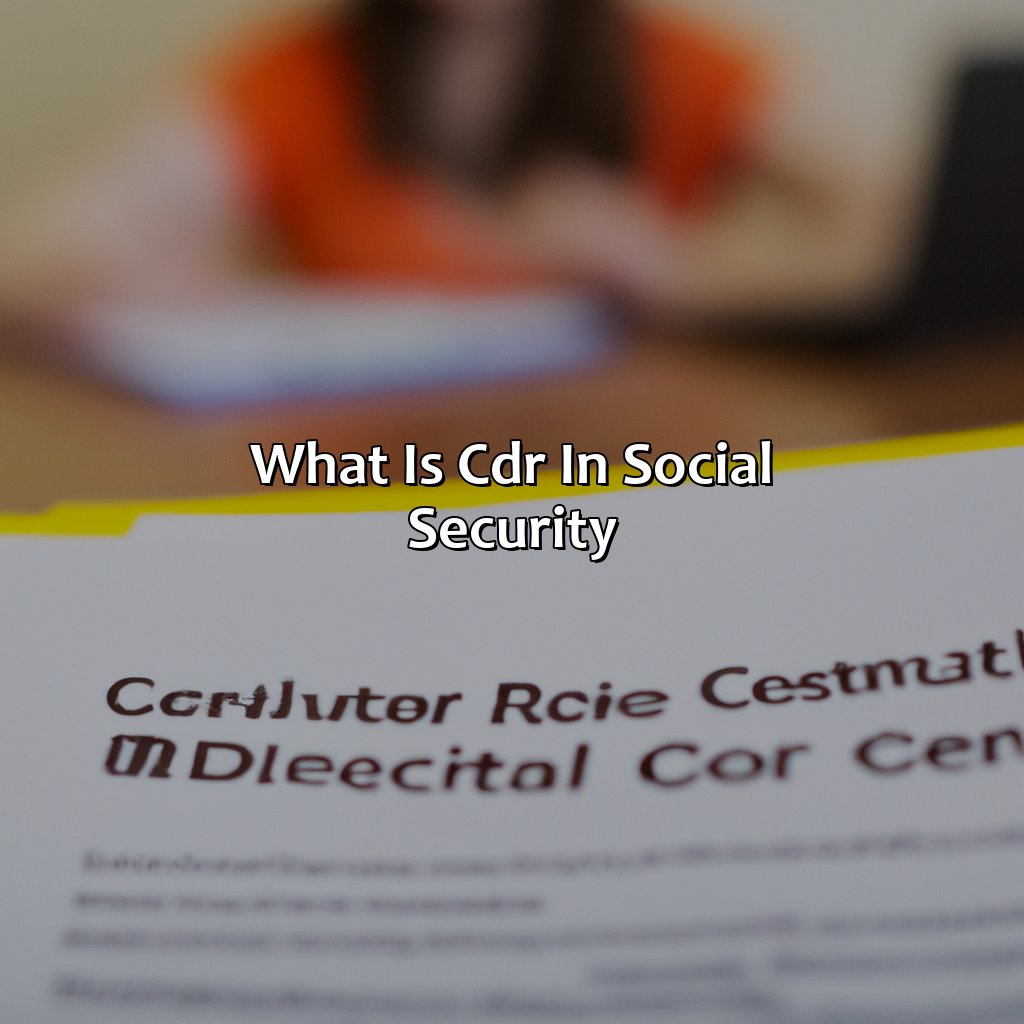What Is Cdr In Social Security?
Key Takeaway:
- CDR in Social Security stands for Continuing Disability Review, which is an evaluation process used to determine if a recipient of Social Security Disability benefits is still eligible for assistance.
- The purpose of CDRs in Social Security is to ensure that individuals who are receiving disability benefits continue to meet the eligibility requirements, including their medical condition and work status.
- The frequency of CDRs in Social Security varies depending on the severity of the recipient’s medical condition, with some individuals needing to undergo CDRs as frequently as every six months, while others only need to undergo CDRs every few years.
Are you confused about the meaning of CDR in Social Security? This article will explain the concept and help you understand the CDR process so you can make informed decisions. With this knowledge, you can ensure you get the most out of your Social Security benefits.
What is a Continuing Disability Review (CDR)
A Continuing Disability Review (CDR) is a periodic assessment of individuals who receive Social Security disability benefits to determine whether they are still disabled and eligible for benefits. It ensures that the Social Security Administration only pays disability benefits to individuals who meet the eligibility criteria. The review considers the individual’s medical condition, work activity, and earnings. It may result in the continuation, cessation, or modification of disability benefits.
During a CDR, the Social Security Administration may request medical records, conduct a medical examination, and obtain information about the individual’s work activity and earnings. Failure to cooperate with the review can result in the cessation or reduction of benefits. It is important to keep all medical and work-related documentation up-to-date to avoid any issues during a review.
It is crucial to note that not everyone receiving disability benefits will undergo a CDR. The frequency of reviews depends on the individual’s medical condition and the likelihood of improvement. Some individuals may only have a CDR every seven years, while others may have it more frequently.
An individual’s circumstances can change, and a CDR can help ensure that they receive the appropriate benefits. For example, a woman with multiple sclerosis named Sarah initially qualified for Social Security disability benefits, but her condition improved, allowing her to work. However, she failed to report her earnings, leading to an overpayment by the Social Security Administration. A CDR was conducted, and her benefits were reduced to adjust to her current situation.
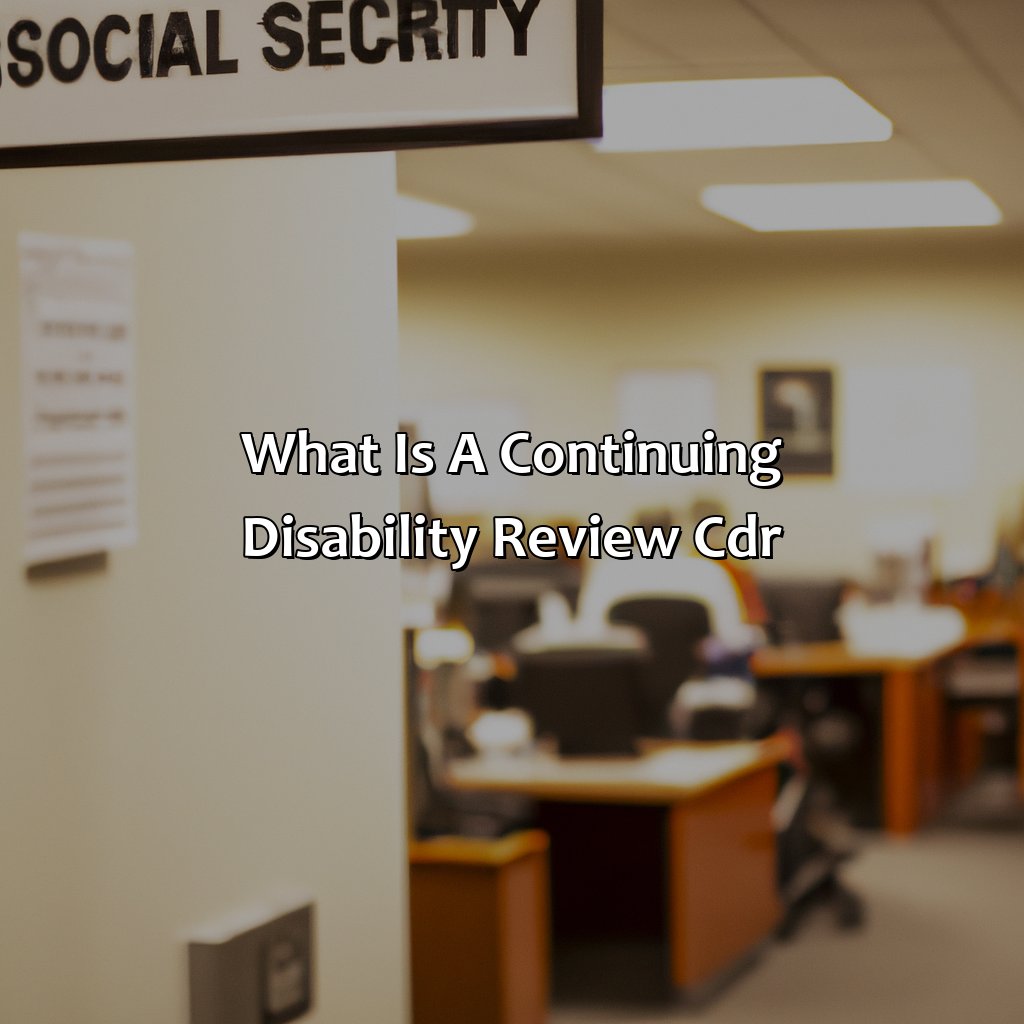
Image credits: retiregenz.com by David Washington
The Purpose of CDRs in Social Security
As part of their effort to ensure that Social Security recipients continue to be eligible for benefits, the Social Security Administration routinely conducts Continuing Disability Reviews (CDRs). These reviews are intended to evaluate the individual’s current disability and to determine if they are still eligible for benefits. CDRs are an important tool that ensure only those who are truly disabled continue to receive benefits, while also reducing the instances of fraudulent claims.
During a CDR, the individual’s medical records are reviewed to determine if they still meet the eligibility requirements for disability benefits. This includes a review of any new medical records, as well as any updates to the individual’s condition and treatment plan. CDRs may also involve a medical examination or interview with the individual to assess their current abilities and limitations.
It is important for Social Security recipients to cooperate fully with CDRs, as failure to do so may result in the loss of benefits. One suggestion to make the CDR process smoother is to stay organized by keeping all medical records and documentation in one place. This can help ensure that all necessary information is readily available during the review process. Additionally, it is important for individuals to continue receiving regular medical treatment and to inform the Social Security Administration of any changes in their condition.
Overall, CDRs play a vital role in maintaining the integrity of the Social Security disability program. By ensuring that only those who meet the eligibility requirements receive benefits, the program is able to provide much-needed support to those who truly need it.
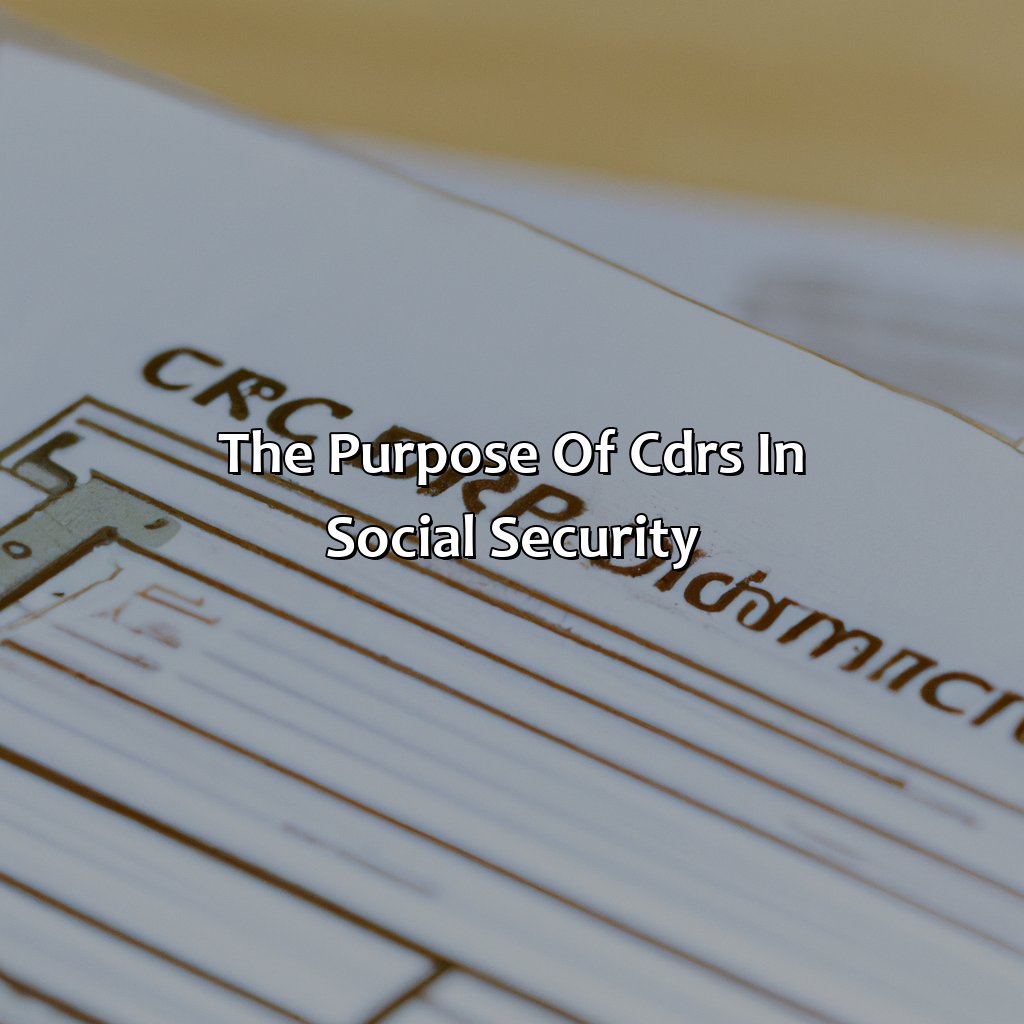
Image credits: retiregenz.com by Joel Washington
Process of CDR in Social Security
In the realm of Social Security, the process of reviewing an individual’s eligibility for benefits involves something called the Continuing Disability Review (CDR). During the CDR process, Social Security Administration (SSA) will assess if the recipient’s condition has improved or if they are still unable to work due to their disability. This review helps the SSA ensure that deserving individuals receive appropriate benefits and that those who have recovered from their condition are no longer receiving benefits. The CDR process is crucial in maintaining the integrity of the Social Security Disability Insurance program. It is conducted periodically at different intervals depending on the individual’s particular case.
Moreover, the CDR process plays an essential role in ensuring the sustainability of the Social Security program. SSA conducts Medical and Disability Reviews regularly to ensure that beneficiaries either return to work or continue receiving their benefits for as long as they are medically eligible. The procedures involved in the CDR process can vary based on the individual’s disability and treatment plan. The overall goal of the CDR process with Social Security is to provide a clear assessment of the individual’s condition and determine if they remain eligible for Social Security disability benefits.
A unique aspect of the CDR process is that it can be initiated based on specific rules and regulations. For example, if a recipient earns a certain amount of income, it may trigger a review of their eligibility. This is a necessary step to maintain the legitimacy of the Social Security program and help those who meet the criteria receive the essential benefits they require.
According to the Social Security Administration website, “The Congressional Budget Office has estimated that the proposed legislation would save $2.6 billion over the next ten years by improving Social Security’s medical continuing disability review process, which is currently backlogged.” This portrays the significance of the CDR process in ensuring that deserving beneficiaries are receiving the appropriate benefits and maintaining the sustainability of the program.
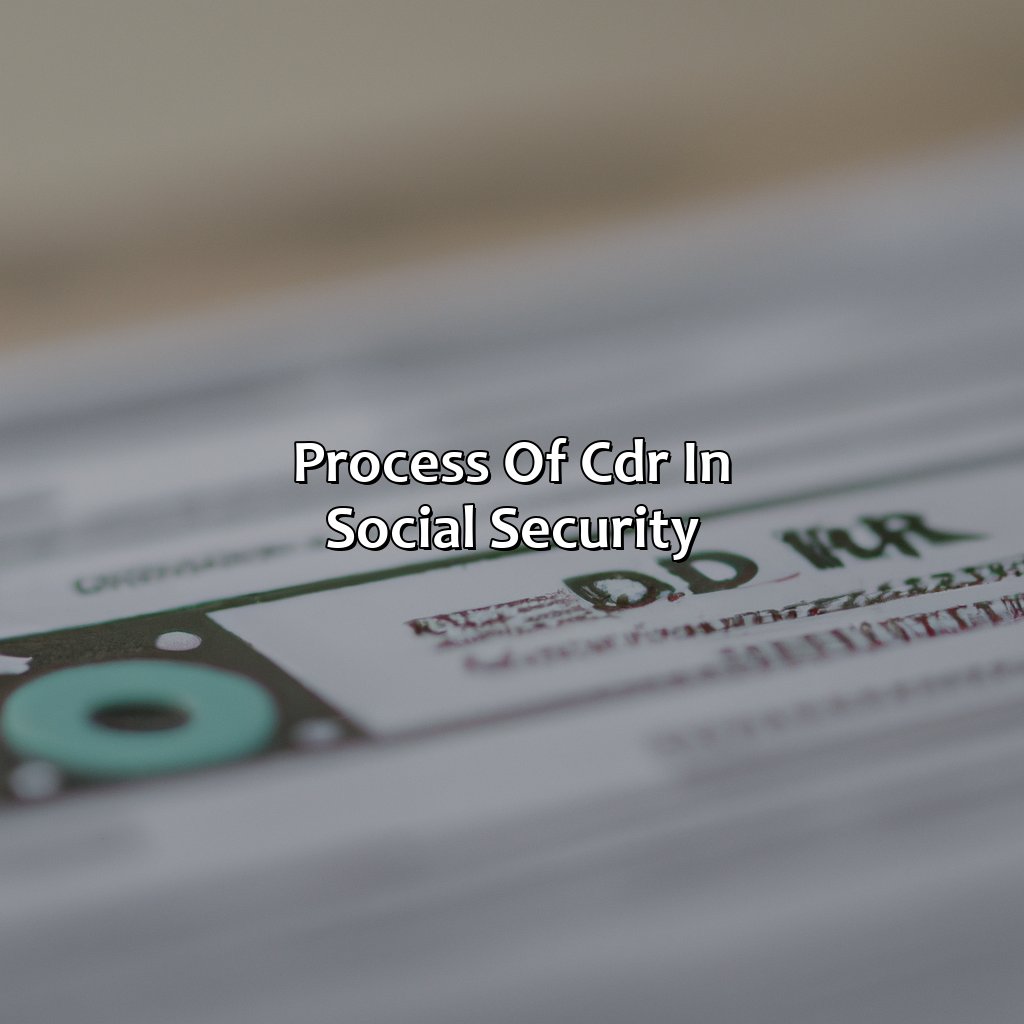
Image credits: retiregenz.com by Adam Arnold
Types of CDRs in Social Security
In Social Security, CDRs (Continuing Disability Reviews) refer to evaluations that determine whether an individual’s disability still exists. The evaluations are conducted at regular intervals based on the type of disability, and failure to complete them can lead to a suspension of benefits.
Below is a table of the types of CDRs in Social Security.
| Type of CDR | Frequency |
|---|---|
| Medical Improvement Expected | Every 6-18 months |
| Medical Improvement Possible | Every 3 years |
| Medical Improvement Not Expected | Every 5-7 years |
It’s essential to note that failure to comply with CDRs can lead to the suspension of benefits. Depending on the type of disability, the frequency of the CDR may vary. It’s imperative to submit updated medical records before the CDR date to avoid suspensions. According to the Social Security Administration, approximately 2.2 million CDRs were conducted in 2020.
Source: Social Security Administration.

Image credits: retiregenz.com by James Duncun
Frequency of CDRs in Social Security
According to Social Security guidelines, there is a specific frequency for conducting Continuing Disability Reviews (CDRs). These reviews ensure that beneficiaries still meet the definition of disability and are therefore eligible for benefits. The frequency of CDRs in Social Security depends on the type and severity of the beneficiary’s medical condition.
To provide a clear understanding of the frequency of CDRs in Social Security, the following table presents the guidelines for conducting reviews based on different medical conditions:
| Medical Condition | CDR Frequency |
|---|---|
| Expect to Improve | 6-18 months after the initial award and every 3 years |
| Possible Improvement | Every 3 years |
| Will Not Improve | Every 5-7 years |
| Permanent and Non-Improvable | Rarely reviewed or only on an ad hoc basis |
It is important to note that the frequency of CDRs in Social Security may vary if there is significant change in the beneficiaries’ medical condition or if there is potential for improvement. Additionally, beneficiaries who are over the age of 55 and have a medical condition that is unlikely to improve are subject to less frequent reviews.
Pro Tip: It is critical to keep all medical records up-to-date and accurately reflecting current medical conditions to avoid unnecessary delays in the review process.

Image credits: retiregenz.com by Adam Duncun
What Happens During a CDR in Social Security
A Continuing Disability Review (CDR) is a process that the Social Security Administration carries out to determine if an individual receiving disability benefits is still eligible. The CDR involves a thorough review of medical and non-medical information by a disability examiner. They check factors such as the claimant’s current medical status and work activity to assess if they still meet the criteria for receiving benefits. It’s important for beneficiaries to cooperate with the SSA in the CDR process to avoid any disruption in their benefits.
During the review process, the SSA may request additional medical evidence, such as medical records or statements from the treating physician, to help with the decision-making process. The frequency of CDRs varies depending on the individual’s medical condition and the likelihood of improvement. Some individuals may undergo CDRs every 18 months, while others may only have them every 7 years.
It’s essential to understand that CDRs are not a punishment but a crucial tool used to ensure that only qualified individuals continue to receive disability benefits. Failing to comply with the CDR can lead to a loss of benefits or even a fraud investigation.
It’s important to respond promptly to any requests from the SSA and keep them informed of any changes in your medical conditions or work activity that may affect your eligibility for receiving benefits.
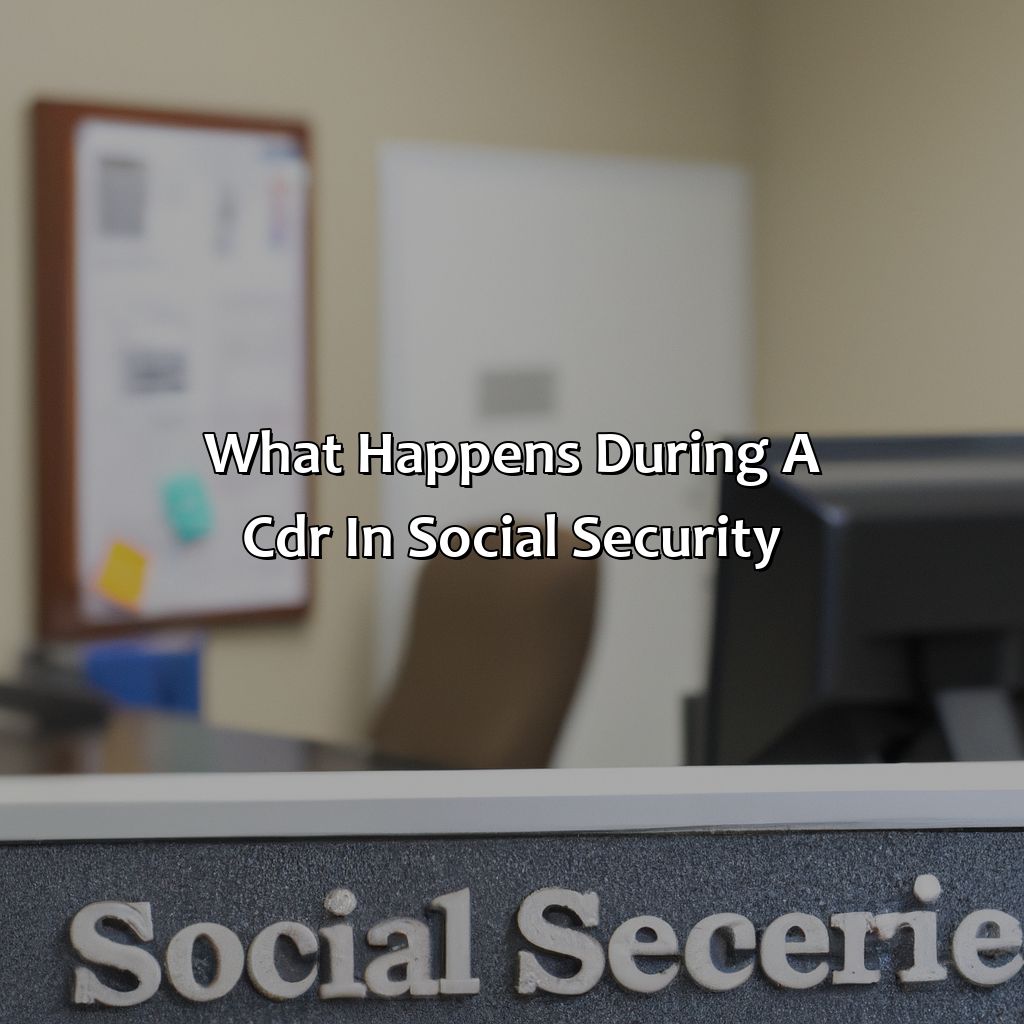
Image credits: retiregenz.com by David Jones
Possible Outcomes of a CDR in Social Security
Possible CDR Outcomes in Social Security
Social Security conducts periodic medical reviews termed “Continuing Disability Reviews” (CDRs) to assess benefit eligibility for persons receiving disability benefits. CDR evaluations follow three possible outcomes:
- Social Security determines medical evidence is strong enough to continue benefits with no future review scheduled;
- Social Security reviews again in 6-18 months; or
- Benefits end due to medical improvement or there is an ability to work.
It is crucial to respond promptly to CDR requests as failure to comply may result in loss of benefits. If your benefits end, you may request an appeal or file a new application if you believe you still have a disabling condition. Always keep Social Security informed of any change in your medical condition that could affect your benefits.

Image credits: retiregenz.com by Harry Arnold
Tips for Preparing for a CDR in Social Security
Preparation tips for a Continuing Disability Review (CDR) with Social Security include ensuring personal records are up-to-date and accurate.
It is recommended to provide any medical and non-medical evidence that supports the claimant’s disability, and to inform the Social Security Administration of any changes in medical treatment or living conditions. During the review process, communication with the agency is crucial.
It is important to note that failure to comply with the review process can result in termination or reduction of benefits. Claimants should utilize resources such as legal representation or local advocacy groups.
Pro Tip: Keep detailed records throughout the review process, including dates of communication and any documentation provided.
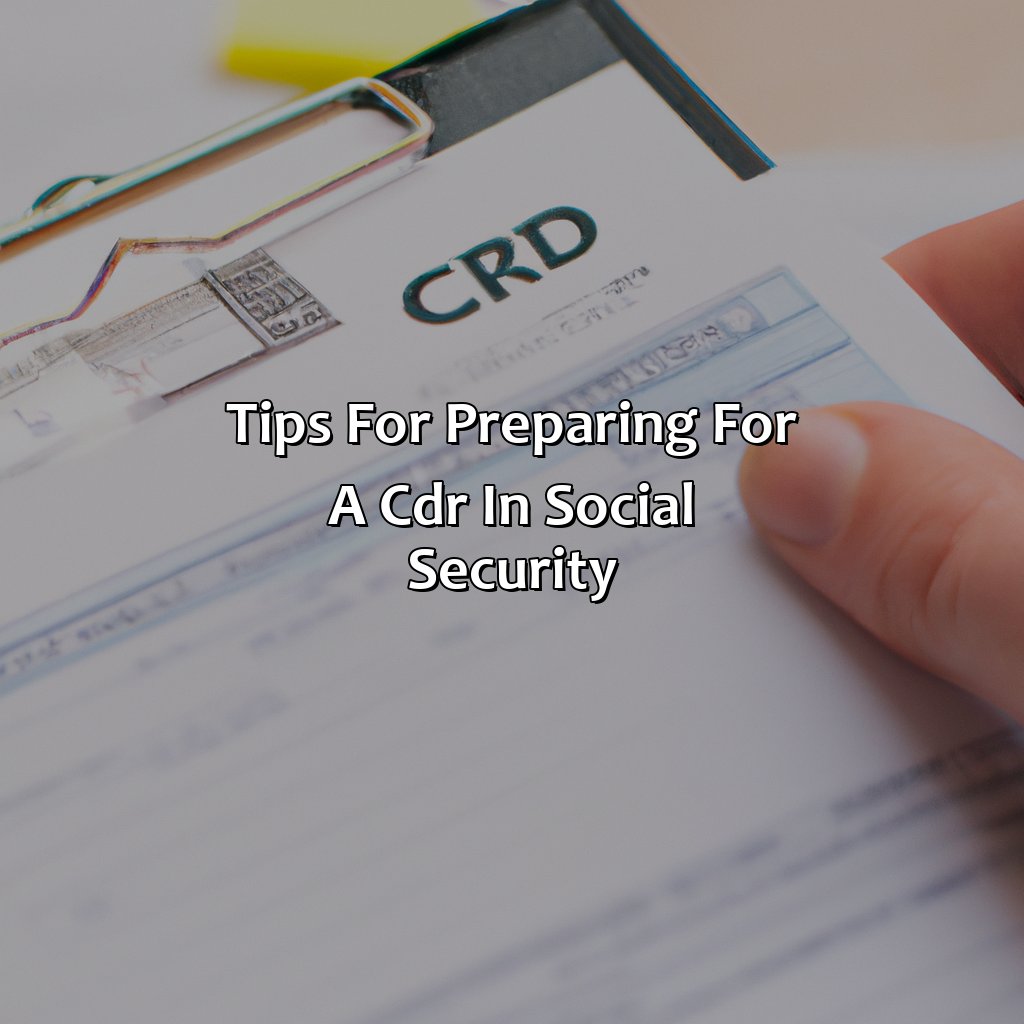
Image credits: retiregenz.com by David Woodhock
Five Facts About CDR in Social Security:
CDR stands for Continuing Disability Review. (Source: SSA)
Social Security conducts CDRs to determine if a recipient’s disability has improved and if they are still eligible for benefits. (Source: SSA)
CDRs are performed at different intervals for different disability categories, ranging from every six months to once every seven years. (Source: SSA)
Recipients can receive CDR forms by mail or online, and failure to complete them can result in the cessation of benefits. (Source: SSA)
CDRs can be appealed, and recipients have the right to representation during the appeal process. (Source: NOLO)
FAQs about What Is Cdr In Social Security?
What is CDR in Social Security?
CDR stands for Continuing Disability Review. It is a process by which the Social Security Administration evaluates the medical condition of a person receiving disability benefits to determine if they are still eligible for those benefits.
Why is CDR important?
CDR is important because it ensures that only those who are still disabled and unable to work continue to receive disability benefits. It also helps to identify individuals who may have experienced an improvement in their medical condition and are now able to return to work.
How often does CDR occur?
The frequency of CDR depends on the severity of the disability. Those with severe disabilities may receive a review every 3 years, whereas individuals with less severe disabilities may only receive a review every 7 years.
What happens during CDR?
During CDR, the Social Security Administration reviews the individual’s medical records and may request additional information from their doctors. They will then determine if there has been any improvement in the medical condition that would allow the individual to return to work.
What if my CDR determines I am no longer eligible for benefits?
If your CDR determines that you are no longer eligible for benefits, you have the right to appeal the decision. It is important to contact a Social Security attorney to discuss your options.
Is CDR only for Social Security disability benefits?
No, CDR is also done for recipients of Supplemental Security Income (SSI) benefits.
 Checkout this IRS Loophole
Checkout this IRS Loophole 
